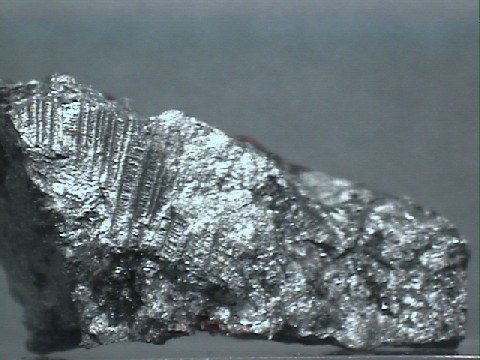 THE
MINERAL
THE
MINERAL
RAMMELSBERGITE
- Chemistry: NiAs2, Nickel Arsenide.
- Class: Sulfides
- Subclass: Arsenides
- Group: Marcasite and Lollingite
- Uses: As a very minor ore of nickel and arsenic and as mineral specimens.
Specimens
Rammelsbergite is a rare mineral, but is found with other arsenides and thus it is included with them when mined for nickel and/or arsenic. It is a member of the Lollingite Group. The namesake of the group, lollingite is closely related, but has more iron than nickel in its chemistry. Another closely related mineral is saffloriite, which has more cobalt than nickel. The three minerals share the same basic structure and just differ by chemistry. The lollingite group is sometimes placed in the larger Marcasite Group.
Rammelsbergite lends it name to its dimorphic cousin,
PHYSICAL CHARACTERISTICS:
- Color is silvery white, almost reddish (tarnishes to yellow or pink).
- Luster is metallic.
- Transparency: Crystals are opaque.
- Crystal System is orthorhombic; 2/m 2/m 2/m
- Crystal Habits include rare tabular to stubby crystals, sometimes in cock's comb habit. More commonly found fibrous (radially), massive and granular.
- Cleavage is absent.
- Fracture: Uneven.
- Hardness is 5.5 - 6
- Specific Gravity is approximately 6.9 - 7.1 (well above average for metallic minerals)
- Streak is a gray.
- Associated Minerals include
niccolite , gersdorffite, quartz, annabergite, pyrite, lollingite,chloanthite , arsenic, cobaltite, arsenopyrite and silver. - Notable Occurrences include the Sainte-Marie-Aux-Mines district, France; Great Bear Lake and the Frontier Mine, Cobalt, Ontario, Canada; Kongsberg, Norway; Binntal Switzerland; Lolling, Austria; Bou Azzer, Morocco; Batopilas, Chihuahua, Mexico; Keweenaw, Michigan and the type locality of Schneeburg, Harz Mountains, Germany.
- Best Field Indicators are crystal habits, color (tarnish), associations, streak, hardness and density.


